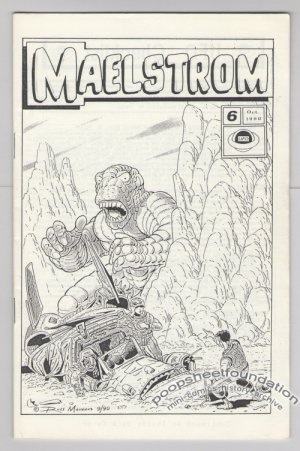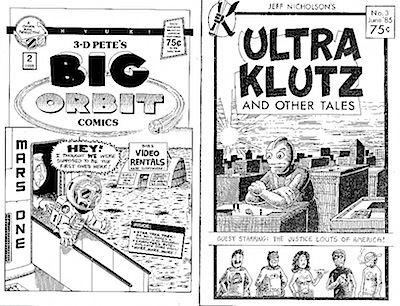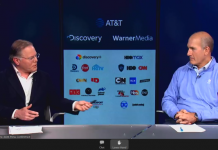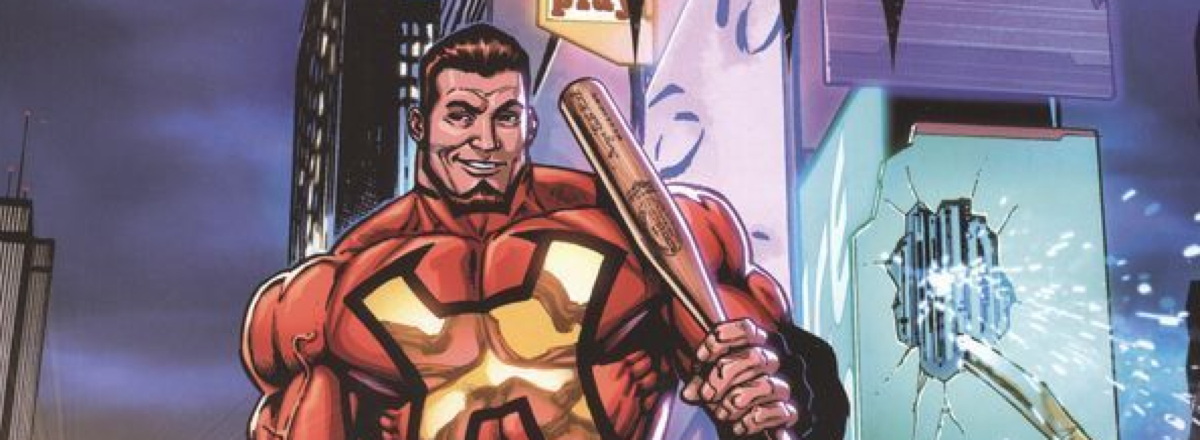§You know how at this very website we keep talking about the ascendance of comic-con culture? PalmCon down in Florida has ended it, full stop. The dream died. Or so says the author of a piece entitled: PalmCon Probably the Most Depressing Comic Book Convention in History. Allie Conti writes for the Broward/Palm Beach New Times:
PalmCon is one of the most depressing places I’ve ever been to in my life. It was basically like going to a mall in which every store sells the same couple of dust-covered items and every person looks like they work at Hot Topic. I had sort-of high hopes for my first comic book convention — not because I like comics (ew) but because I really love dumb hats and costumes. Unfortunately, not many people at PalmCon were interested in dressing up, and quite a few looked like they had stumbled inside on accident. They were probably pretty bummed out when they realized they had just paid $9 for access to a room in which the opportunity existed to access a smaller room and spend more money on terrible-looking pizza.
Oh dear.
While not everyone can enjoy their con experience, and it’s a free country, this piece drew a somewhat…vocal response in the comments.
Why would you write about something you have no interest in or even understand? This “Journalist” mentions several times in the article how he doesn’t understand the culture and spends it criticizing people for their interest. Rather than criticizing this inept wanna’ be writer, I would rather share my perception of the event. Palm Con was a fun gathering of people you enjoy reliving their younger days of cartoons and comics. It is created for everyone who shares a passion for sequential art (Comic books or strips), toys, and pop culture. Palm Con had a good turnout of convention goers. Several expressed their creativity by donning their home made and elaborate costumes. There was an air of curiosity and excitement.
Some comments mentioned the pizza, saying it was just fine. Others promised prompt action:
A letter will be written to your corporate office and I hope that they take the proper corrective action against you. I expect better from such a major media outlet.
And finally, intense psychoanalysis was brought out:
Maybe its your obvious low self esteem, or the void that you have for a soul , that you felt compelled to just tear down an otherwise great event that was enjoyed by everybody. Maybe you never been hugged or maybe your have some hip friends you’re trying to impress by being “mean” or “fierce” or some other way to make your self feel better.
Once again, we should remind ourselves that Comic-Cons are not for every body, or a least not for Allie Conti.
§ On the other hand, Irish comics writer Darrin O’Toole (Tales from the Void) has been going around to shows and trying to sell comics, and shares his up and down experiences at various UK/Ireland shows:
So first off, let me start by using the above to highlight that what people say on panels is really true, doing the con scene is vital to progressing in the industry. It’s a no-brainer. Top talent scouts, editors and creators are sat there more than happy to talk to you. Attendees generally go to several cons per year, so they get to know you and your work, and this is how you build a fan-base for your books. To anyone watching, it’s obvious that those at cons are progressing and those that don’t go have a minuscule chance of going anywhere in a business that is more about personal relationships than cold pitching.
So that’s the obvious about the con circuit, but now, lets look at how much this costs. If you think printing a book cost you money, wait until you start on the con circuit, especially from a little island like ours.
§ Chris Hemsworth says DC can’t carry Marvel’s jock when it comes to the superhero moves:
Jake Hamilton: “Whether you know it or not or whether you admit it or not, you’re kinda in one yourself: the rivalry between Marvel and DC. Do you hear about that, is that something you are aware of, or do you care about that sort of rivalry?”
Chris Hemsworth: “We’re just winning aren’t we? That’s not really a rivalry.”
BURN.
§ How there was almost a comics dept at the Museum of Modern Art 20 years ago. Robert Boyd is sad that there wasn’t, but I think it would have been too soon. That said, now would be better, I think?
§ Stan Lee and Jack Kirby were photographed in the Marvel offices but no one know why or when. Note: you’ll be shocked at Stan’s appearance!
§ Are we still talking about SPX? Yes, we are, because it was the beginning of something new. RM Rhodes (the guy who wears the purple suit) wrote his thoughts on the show as a response to this from R. Maheras:
There’s a relative sameness pervading contemporary small press that I don’t remember seeing during the small press explosion of the 1980s.
Zombies, cutesy creatures/monsters, or reality-based angst comics seemed to be bulk of what’s available these days.
I did peg those categories in my own report but I COULD NOT DISAGREE MORE WITH THIS. Maheras, a frequent commenter here and at other sites, was a fanzine artist back in the day with stuff like this:
and in the comments on the piece people keep asking him what he means by diversity and he finally links to some scans of old zines that were done.
Now I’ll jump right in there and say that I loved Ultra Klutz back in the day (although Jeff Nicholson’s masterpiece was Through the Habitrails) but how can you possibly compare this genre influenced stuff to the work of Frank Santoro, Julia Gforer, Cole Closser, Jen Wang, Nick Bertozzi, Ellen Lindner, Tom Scioli, Warren Craghead and…so on and on. I mean…come on. It is okay to be an old timer who thinks things were better back in the day, but I have to tell you, where comics are concerned, they weren’t. Because you can buy all the good old stuff and all sorts of crazy new stuff right this minute. That never happened before! Russ Maheras and Allie Conti can form a club, and not enjoy this, but I do, and I bet a lot of other people do, too.










I got hooked on comics in 1984 (AS-M #254).
I’m now reading the reprints of Comics Interview and filling in the gaps of what I ignored because I only had so many coins, and there were too many comics.
The 80s were an amazing time. The Direct Market inspired lots of innovation. The small press movement was fun, and interesting, but it was hard discovering those mini-comics unless you went to a show somewhere.
But, yeah, now is just a repeat of back then, except in color, or with better binding, the companies are more stable, and it’s easier to find stuff.
But man! Heidi… you worked on those Amazing Heroes preview specials. You know what was offered back then… It’s just as diverse, except now the pie is a lot bigger, with more slices. (It’s too bad that Harlan had his falling out with Gary… I was so hyped for “The Vegenauts”!)
A page full of con reports makes a stultifyingly boring read.
The comment section on the PalmCon is the most depressing thing I’ve ever seen. Allie Conti doesn’t deserve the attacks; I’ve been to many, many cons like she went to. They’re boring and depressing. There’s nothing wrong with not liking bad stuff.
The Independent comics boom and the small press boom of the 1980s were two different animals. There was some overlap, but not much. So if one talks about B & W independent comics of the 1980s, like “Teenage Mutant Ninja Turtles,” “Love and Rockets,” or “Concrete,” they are NOT talking about the small press boom that paralleled it. The former involved primary distribution through the direct market and professionally printed print runs in the thousands; and the latter involved primary distribution through the US mail, and hand copied/collated/stapled print runs in the low hundreds (or less).
By the time the 1990s rolled around, some of the 1980s small pressers eventually published slicker B & W independent comics (Ralph Snart, Lethargic Lad, Ultra Klutz, Rob Hanes Adventures, et al), but their initial incarnations were much more modestly published.
From everything I read and heard about SPX over the years since its humble beginnings back in the mid-1990s, and from my own personal dealing with the “new” small press movement I observed from the 1980s through the mid-1990s, I expected a much different show then the one I saw when I attended my first ever SPX last week. It was far more commercialized than I ever would have imagined, and I wonder if anyone who has attended SPX from the beginning can elaborate on the changes the show has seen over the years.
The biggest change is that the mini-comics are now online.
Self-publishing has morphed from making your own newsstand comic to making a trade collection, usually from a webcomic. (Jeff Smith is doing this with his next comics series.)
As for the commercialization… that may be due to the independent, “literary” publishers out there… what I used to call the “New Yorker” crowd. Fantagraphics, Top Shelf, and the various “art comic” publishers have a bigger catalog, fueled, in part, by the indie comics creators they’ve met at past SPXs. (Many of whom are also working for the Big Six publishers.)
Just take a look at this year’s Best American Comics volume. Many entrants are excerpts from books, not comics.
One of the major drivers of change over the past decade that I’ve been attending SPX is the dramatic drop in price for Print on Demand publishing. It is now possible to get a limited print run from a professional printer for not a lot of money. This has led to an increase in production values which is very easy to interpret as commercialization.
A number of small press creators of my acquaintaince work in/with professional print houses in their day jobs and, as a result, know how to make commercial-quality work, so it’s hardly surprising that this industrial competency shows through in what they present.
Being able to present the initial serialization online has also been a big change over the course of the past decade. Over the years, I’ve seen more and more books at the show that were compilations of webcomics. There really is no barrier to trying the comics and the compilations tend to be bought mostly by people who either like the concept or already know the property.
The other major change that SPX has seen is the venue. The new place is a lot more upscale than the old place and is really very brightly lit and impressive. It really gives the show a different feeling than something that’s held in a convention center with concrete floors – it’s like the show takes itself more seriously.
It’s funny, but that cover of “Maelstrom” #6 (no doubt Rick Bradford’s copy) is pretty damn rare, as it’s from the first print run of 15-20 copies that only went out to United Fanzine Organization (UFO) co-op members. For the second printing, which I sold through the mail and used as my mailing contribution for CAPA-alpha #316 (Feb. 1991), the cover stock was yellow, and the hand-drawn “Maelstrom” logo was totally re-done into a much slicker “Press-Type” version.
Second printing cover:
http://home.comcast.net/~russ.maheras/Maelstrom-06-1990-72dpi.jpg
I thought “Palm Con” was going to be about a comicon that occurs on our collective cell phones. You know, performed in the palm of your hand via Jack Kirby’s proverbial “mother box.” I’ll give it a year or so before that actually happens. And, then Star Trek fans will adopt the concept and unveil Palm Khan!!! (<—three exclamation marks for that Kirk/Spock yowl)
If you want a show in the vein of “old school” SPX try:
http://www.backporchcomics.com/space.htm
Thank god Allie Conti didn’t go to the LA Comic/Sci Fi Con.
“Palm Con”…
With the streaming author events, it won’t be too difficult to do a global con from a variety of venues.
Either everyone is at the same table, or it’s done via teleconferencing.
And an hour later, Apple sells the comic of the talk produced via their latest patent:
http://www.patentlyapple.com/patently-apple/2010/08/apple-app-will-create-a-comic-book-from-your-video-game-play.html
At first I was angry with Allie Conti’s report. Then I read those awful comments. Nerds, why?
Allie Conti might not deserve the hateful backlash (which is immature in and of itself), but her entire tone was condescending. She (or he, whichever pronoun) is not just attacking an industry, she’s belittling an identity that many fans carry. Now, we can say that us nerd/geeks/fans should grow a thicker skin, learn to grow up, etc. (all true to certain extents), but the reality is, Conti’s article was simply poorly-written. The purpose of criticism is to share, critique, and enlighten, not to sound cool via poking fun at nerds.
Disliking the con would have been a fine thing to write about. BUT she used her public platform to bash teenage kids, and make fun of them. This crosses a line.
Maybe it’s time to start writing Allie Conti-like about sports fans and sporting events.
In a response to the comments on her blog post, Conti wrote:
A con can easily resemble a flea market if it’s dominated by tables for people selling stuff. How many people remember computer shows from the ’90s, which had tables covered with miscellaneous PC parts and reviewer copies of software for sale?
Conti would hardly be the only one disappointed to find she’d spent money to get into a place filled with people wanting more money.
SRS
@ Synsidar
Wrong. Conti attacks the fans because they didn’t dress up for her amusement. They paid their nine bucks because they wanted to shop for comic books and stuff. There was no fine print or terms of agreement on the admission stating you had to cosplay for the disgruntled “journalist.”
Also, the Gothic Girl (who is quite cute) was singled out like an attention whore posing for “creep photos.” Since I didn’t see any quotes from her, I’m assuming Gothic Girl didn’t know she was going to be ridiculed (along with everyone else) or she may have asked Conti not to include her photo in the article.
The “Gothic Girl” is “leah.turner90”, and she replies early in the comments.
While the reporter didn’t find much of interest, the photographer did:
http://www.browardpalmbeach.com/slideshow/palmcon-at-palm-beach-convention-center-40410176/#9
The paper did apologize.
“To Everyone Upset About That PalmCon Article…”
—
For $10, I wouldn’t be disappointed. They hosted a diverse guest list.
Now the $40 I spent for one day at the first Wizard World New York show… that was pretty awful.
As one of the small press people Russ mentions, I loved the small press/zine community because it was a self-contained world where everyone knew each other (at least through zines and the mail), full of a lot of DIYers that reflected an energy and enthusiasm that got me into drawing comics in the first place. But the rise of the Internet and the accessibility and affordability of self-publishing (leading to POD printing) really changed the dynamics and blurred the line between the small press and modern independent publishing. Not better or worse, just different, thanks to, of course, new technologies. For me personally, those small press days gave me a chance to develop as an artist and build an audience while still remaining under the radar, and I remember them fondly.
One final point, Heidi. Those “examples” were old, easily accessible scans from an unrelated thread, and not at all indicative of the wide variety of small press material that was actually published. One could probably write an entire book about Steve Willis’ material alone. To most mainstream fan publications back then (TCJ, CBG, Amazing Heroes, et al), the small press movement was almost invisible — which is why you apparently don’t remember anything about it.
Russ, I do remember a lot about it and I think it was amazing and full of strong distinctive voices. But to say that there is less variety today is just ridiculous.
NOW, I think what you are saying is that because there were so fewer actual OUTLETS for comics a lot of people who were professional level and beyond published there. Nowadays, believe it or not, there is more variety in professional comics thanks to the work of those small press pioneers.
I think once we define our terms more concretely, we will find ourselves in much more agreement.
And Randy, yesterday’s APA is today’s Tumblr, which functions in almost exactly the same way. If you read any of the Tumblr stories about SPX I linked to you’ll see young folks talking about meeting their pals from Tumblr. It is very much a community.
Heidi – Perhaps there isn’t less contemporary small press variety overall – just at SPX. After all, when I go to a comics store sporting a small press display area, there’s an almost chaotic sense of variety – which is what I thought I’d see at this, my first, SPX.
But SPX was far more commercialized than I expected for a small press venue. Many of the offerings were slickly published, sporting much higher than expected prices for experimenting artists – prices equivalent to the same stuff I’d buy from the major companies at San Diego or other big cons. In fact, if I hadn’t used some self-restraint, I could have easily spent more at SPX than I did at Comic-Con – which is an absurd prospect for someone who has been following the self-publishing movement since the early 1970s. As it is, even though I’m now local to SPX and took the Metro there, I dropped about $140 in about an hour.
As for variety of subject matter, SPX had a sameness I also did not expect. But that could be because, with table prices at $300 ($150 for half of a table), the old-style, non-entrepreneurial small-presser really no longer has a seat at the party, and what’s left are the “haves” who can not only afford a table, but they can also afford to make the trip. As a result, prices tend to be much higher, as those who do attend try to recoup their expenses. I have a feeling this drives content (i.e., creators subconsciously gravitate themes towards what is currently hot and what they think will sell), rather than the “art for art’s sake” vibe I remember from the 1980s.
Don’t get me wrong – I saw some of that at SPX. But it was muted, and lost in the shuffle of the more commercially-minded entrepreneurs
And as I mentioned in a different thread, my gripes do not mean I won’t go next year. I thought it was a great venue, even though it was far pricier than I think a small press venue should be.
Regarding APAs, there still are a few that are alive and kicking. CAPA-alpha — which has been published monthly since 1964 — celebrates its 50th anniversary next year. And a few days ago, I sent off a my contribution for the October mailing of Cartoon Loonacy. And keep in mind that there’s no “breaking even,” and certainly no profit, in the APA world.
Comments are closed.